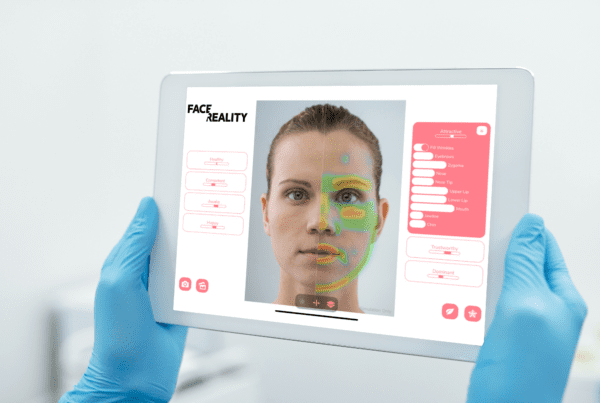Aesthetic medicine has entered a new era, one where the power of digital simulation tools is reshaping the way both practitioners and patients perceive and approach treatments. These innovative tools have not only enhanced the consultation process but have also become invaluable for setting realistic expectations and achieving more natural-looking results. In this article, we’ll delve into the transformative impact of simulation tools on aesthetic medicine.
Bridging the Imagination Gap for Aesthetic Treatments with Simulations

Historically, the consultation process in aesthetic medicine relied heavily on verbal explanations, images, or simply the patient’s imagination. Patients often struggled to visualize the potential outcomes of treatments, leading to misunderstandings and sometimes unrealistic expectations. This is where simulation tools such as FaceReveal have stepped in to bridge the imagination gap.
The Power of Visualization and Simulation
One of the most significant advantages of simulation tools is their ability to provide visual clarity. Patients can now see how various treatments will affect their appearance before committing to any procedure. Whether it’s dermal fillers, Botox, or facial contouring, these tools allow for highly accurate, personalized visualizations.
Informed Decision-Making through Simulations
Simulation tools empower patients to make decisions based on concrete visual evidence. They no longer need to rely solely on trust or imagination. Instead, they can actively participate in the decision-making process, understanding the potential results and setting realistic expectations. Additionally, engaging patients into a decision-making process that they understand is more likely to result in outcomes that align with their desires and increased treatment satisfaction.
Building Trust
Trust is the foundation of any patient-practitioner relationship. Simulation tools have revolutionized the trust-building process by making consultations more transparent and interactive. Practitioners can use these tools to illustrate potential outcomes, ensuring that patients have a clear understanding of the proposed treatments.
Personalized Treatment Plans

No two faces are alike, and neither should be the treatment plans. Simulation tools enable practitioners to create highly personalized treatment strategies tailored to each patient’s unique facial structure and goals. This level of customization ensures that treatments are optimized for the best possible results.
Enhancing the Patient Experience with Engaging Simulations
The patient experience has also evolved with the integration of simulation tools. Patients appreciate the opportunity to actively participate in their aesthetic journey, and the visual aspect of these tools adds a layer of excitement and assurance.
Where Do We Go from Here?
As simulation tools continue to advance, we can expect even more realistic and sophisticated visualizations. These tools will likely become increasingly accessible, making them a standard part of the aesthetic medicine consultation process. Practitioners will also continue to refine their use of these tools, ensuring that they enhance patient experiences and outcomes. Also, new technologies such as AI will play an increasing role in aesthetic medicine (How AI is shaping the future of aesthetics)
In Conclusion
Simulation tools have emerged as a game-changer in the field of aesthetic medicine. They have transformed the consultation process, empowered patients to make informed decisions, and fostered trust between patients and practitioners. As we move forward, the integration of technology and aesthetics promises a future where the journey to enhanced beauty is more transparent, interactive, and inspiring than ever before. Simulation tools are undoubtedly at the forefront of this evolution, shaping the aesthetics of tomorrow.




